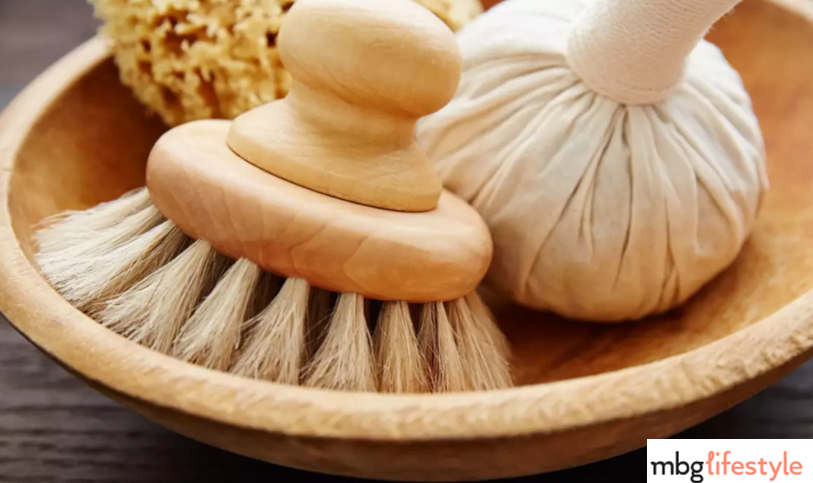Now that we’re entering the warmer months, we’re seeing a lot more walkers, joggers, and cyclists traversing our neighborhoods. At the parks, you may begin seeing more fitness boot camps, tennis matches, volleyball, and basketball games. Typically, moods are brighter and overall, there’s a general sense of wellness. Although much of that feeling has to do with more Vitamin D and endorphin production as we spend more time outside, a good bit of it is due to simply increasing your physical movement.
Have you ever stopped to take note of how great you feel as you incorporate more exercise into your daily routine? As your activity levels increase, your risk of attracting an illness decreases. This correlation exists because moving our bodies is not only good for our waistlines and cardiovascular health, it is also a requirement to activate our body’s natural immune response through our lymphatic system.
What is the lymphatic system?
The lymphatic system is comprised of an extensive network of lymph vessels, lymph nodes, and lymph fluid, along with the tonsils, adenoids, thymus, and spleen, that all serve in removing waste, toxins, and other unwanted debris via the flow of lymphatic fluid throughout the body.[1] Lymphatic fluid contains white blood cells that are responsible for fighting infection and barring potential threats from taking hold in the body. There are between 600 to 700 lymph nodes throughout the body that filter the lymph fluid, removing that which is harmful or no longer needed.[2]
This system is critically important to our overall health because, in addition to its important immune and defense purpose, the lymphatic system is important to the overall flow and balance of fluids between our blood and tissues, and because a good portion of our lymph nodes and vessels are in the digestive system, gut-associated lymphoid tissue (GALT) actually help to facilitate the absorption of fats and fat-soluble nutrients into our bodies while preventing unwanted invaders from penetrating into our systems. This is illustrative of the innate wisdom that is designed into our bodies.
Although this system is part of the circulatory system, it does not have a pump to activate it. Unlike the circulatory system, with its beating heart that consistently pumps blood through the body, the lymphatic system requires our movement to pump the infection-fighting lymphatic fluid throughout the body.
What can cause lymphatic congestion?
Inactivity. Since the lymphatic system requires movement to actively pump lymphatic fluid, having a sedentary lifestyle can create congestion in the system over time. This can then lead to a build-up of toxins within the lymph nodes. You may have noticed that when you are dealing with an infection, your lymph nodes in your neck may be swollen. This is an area that is often checked during regular doctor visits. If swelling exists in your lymph nodes, your body needs to rid itself of the toxin build-up so that your lymphatic fluid can be carried through your body, allowing your immune system to perform its functions.
Dehydration. As lymphatic system requires fluid to be carried throughout your body, your body needs to be properly hydrated. If your body doesn’t have the water to carry out its normal functions, the body will be forced into survival mode, requiring it to only use the water you’ve consumed for its most important functions. This means that bodily functions that may be considered secondary, such as warding off infections, will not have the hydration required to work properly. By ensuring that you are drinking your body’s required amount of water, your lymphatic system should have the hydration required to maintain its proper flow.
Excessive toxins. What you eat, touch, and breathe can introduce toxins into your body. If you’re eating processed foods or applying personal care products to your skin that are laden with chemicals, your body can become overloaded with toxins. When these toxins are introduced into your body faster than your body can respond to them, this will cause your body’s natural detoxification process to slow down as it is struggling to keep up. Telltale signs of this can be skin that becomes dull, more wrinkled, and weighed down, or other skin conditions like rashes where your body is essentially trying to push out the toxins.
Do you remember that episode of “I Love Lucy” where she was working in a chocolate factory? She and Ethel were responsible for wrapping each piece of chocolate that came down the line. In the beginning, the conveyer belt was moving at a slow, steady pace. However, more candy began coming down the belt at once, not allowing Ethel or Lucy to keep up. Eventually, they began stuffing the candy in their mouths, shoving them down their shirts, and putting them in their hats to prevent candy from reaching the end of the line unwrapped.
While this is a humorous clip, it provides a very simple analogy of what can happen when your body toxin and waste removal system through the lymphatic system (the conveyor belt with the action of Lucy and Ethel) is not able to keep up with the influx of toxins (chocolates). Just as Lucy and Ethel began stuffing chocolates everywhere, the toxins can be deposited in areas of the body that can prove to be harmful over time. When Lucy and Ethel wrap the chocolates (toxins), that is similar to how the toxins get filtered through the lymph nodes where the lymphocytes of the white blood cells can render bacteria and other microbes harmless while any other unwanted debris can also be filtered out.
Chronic Stress. When stress levels are consistently high, your autonomic nervous system is affected. This causes stress hormones, like cortisol and adrenaline, to be released chronically and not the way in which it was designed, for sporadic crises. The can lead to constriction of blood vessels in response to the release of these hormones. According to the LiveSTRONG® article, Differences Between Blood Vessels & Lymph Vessels, the lymphatic absorb and return lymph fluid from the body back to the venous system, and assists in the body’s immune function.[3]
Additionally, stress can cause inflammation. If an area near or around the lymph vessels becomes inflamed, this will cause the lymph vessels to become constricted, thereby creating a restriction for the flow of fluid.
Surgery. During some surgical procedures, some lymph tissue or lymph nodes may be removed. When this occurs, it does not allow for the proper flow of lymphatic fluid where the tissue has been removed.[4] According to the Live Science article, Lymphatic System: Facts, Functions & Diseases, “This most commonly occurs in women who have had surgery to remove a breast cancer. Part of the operation to remove the breast cancer involves removing lymph nodes in the armpit.”[5] Without the lymph tissue, lymph fluid may begin to collect in the area where the tissue was removed. Exercise is often recommended to manage lymphedema after an operation; however, severe cases may require a surgical procedure to provide relief.[6] This can lead to a condition known as lymphedema, where the disruption of the lymphatic pathway leads to a backup of the fluids in part of the body, most often in the limbs.
Cancer. Tumors from cancer can also physically cause an obstruction to the lymph vessels leading to lymphedema. I struggled with this when I had ovarian cancer where the rather large tumor in my left ovary was obstructing lymph flow initially in my legs, but which eventually moved up to my arms as well. For more on this and how to heal naturally from edema or lymphedema, see my video.
How can you maintain a healthy lymphatic system?
1. Move. Light exercise is one of the easiest ways to activate your lymphatic system. Your lymph system does not require strenuous activity. Therefore, exercises such as walking, stretching, and rebounding can allow your lymphatic system to pump your lymphatic system through your body.
I include a rebounding in most of my workouts as it is a very effective form of exercise in activating the lymphatic system due to the changes in gravitational force with the action of jumping up and landing on the rebounder. According to Dr. Axe’s article, The Benefits of a Trampoline Workout and Rebounding, “upon leaving the surface, the lymphatic valves are opened.” The increased G-force that occurs when you land causes “a surge of lymphatic drainage, which improves circulation and, therefore, may help detoxify your entire system.”[7]
This exercise was very important to me when I was dealing with ovarian cancer. Every day, I would jump on the rebounder for at least 2 minutes every waking hour, and as long as 20 minutes at least once a day, to keep my lymphatic system activated. For other ideas for light and fun exercises, be sure to check out my article, Let’s Get Physical.
When you’re moving, you’re also breathing more deeply. If you consciously focus on breathing from your diaphragm, that very movement will move your abdominal muscles, which helps to move the lymph fluid.
2. Dry Skin Brush. Your skin is the largest organ in your body that aids in the detoxification process. In fact, you lose up to a pound of toxins through your skin every day and over one million skin cells. [8] Therefore, if you’re not exfoliating your skin, you’re constantly accumulating dead skin cells at or near your pores, which will prevent the skin from eliminating toxins effectively.[9] The act of dry brushing exfoliates the skin, removing accumulations of dead skin cells that could potentially block the openings in your skin for toxin removal.
Moreover, your lymph vessels lie below the skin’s surface.[10] Do you know the feeling that you get after giving your hair a really good brushing? You can feel how your scalp comes alive as the flow of blood increases. By dry brushing your skin, you are giving your largest detoxification organ a similar treatment by stimulating it to move lymphatic fluid throughout your body.
To get the full benefits of dry brushing, it’s best to get a long-handled, natural-bristled brush that isn’t too harsh when stroked across your skin. You’ll want to stand inside of your shower so that the tiled floor can catch the falling skin cells. Start at your feet and move up your body, making sure to always brush in the direction of your heart. Once complete, take a shower to wash away the skin cells and to further stimulate your circulatory and lymphatic systems.
For detailed step-by-step instructions on dry brushing, follow these steps from Mind Body Green author, Olivia Jenkins at the link below:[11]
It is important to note that brushing your skin too harshly can lead to micro-cuts in your skin which can lead to infection. Also, brushing too hard may slowly remove your skin’s natural protective barrier which can cause the skin to become dehydrated.[12] Therefore, it’s very important to be mindful of the brush that you use along with the pressure that you apply when brushing. If you have very sensitive skin, or are dealing with a flare up of eczema or psoriasis, you may want to avoid dry brushing until the inflamed skin has returned to normal.
When I was diagnosed with ovarian cancer, one of the places that I went to for holistic healing was Hippocrates Health Institute in West Palm Beach, Florida, where I went through their 3-week Life Transformation Program. While there, I was blessed to experience the expertise of Linda Neubert-Cloward, affectionately known as “LymphLinda,” a lymph drainage therapist and owner of the Rapha Center. Manual lymph drainage is an extremely gentle form of therapy—so much so that it almost feels like nothing is happening. However, after just one session with Linda, I felt incredibly transformed after she gently helped to move areas of my lymphatic system that were congested.
According to Linda, a dry brush cannot be used on tender skin such as your face or breast tissue. Therefore, she provides another option which involves dry brushing with a cotton washcloth. Her method involves brushing the skin with a dry cloth in the direction of your heart, rinsing the cloth in the shower, adding soap, then repeating the process on wet skin. When drying off, she recommends drying in the same manner, always keeping movements flowing towards your heart.[13] For more details about Linda’s method, click the link below:
3. Reduce Stress. Finding ways to incorporate relaxing and stress-reducing activities in your schedule can help to maintain the balance of your autonomic nervous system. When this system is balanced, there is a decreased likelihood of inflammation in the body which can hinder the flow of the lymphatic system. Activities such as meditation or exercise can relax your body and ease tension, preventing your body from the over-production of stress hormones. For more information on the autonomic nervous system and methods for stress reduction, you can read my article, Why “Down” Time Needs to Be Built into Your Daily Schedule.
4. Hydrate. When you are consuming the amount of water that is appropriate for your body weight, or more if you’re dealing with a health challenge, your body is able to utilize it for all of the functions that require hydration, which is essentially all of your functions. When you are dehydrated, your body is forced to decide where the water will be used. When you have enough water in your body, all of your functions, including your lymphatic system, are able to operate in the manner in which they were designed.
Your body has its own natural defense against disease; however, there’s much that you can do to provide the body with what it needs to keep that system activated and maintained. By engaging in activities that keep your lymphatic system activated, you stand a much better chance of loving your life and living in health.
What are some of your thoughts on this important topic? Let me know in the comments below.
Ready to make your health a priority? Contact me here to schedule your consultation.
References:
[1] Luo, M.D., E., & MacGill, M. (2018, February 23). Lymphatic system: Definition, anatomy, function, and diseases. Retrieved May 14, 2018, from https://www.medicalnewstoday.com/articles/303087.php
[2] Zimmerman, Kim. (2018, February 20). Lymphatic System: Facts, Functions & Diseases. Retrieved May 14, 2018, from https://www.livescience.com/26983-lymphatic-system.html
[3] Zuther, J. (2010, August 13). Differences Between Blood Vessels & Lymph Vessels. Retrieved from https://www.livestrong.com/article/204677-differences-between-blood-vessels-lymph-vessels/
[4] Roth, E., Higuera, V., & Kim, M.D., S. (2015, November 25). Lymphatic Obstruction: Causes, Symptoms, and Treatments. Retrieved May 14, 2018, from https://www.healthline.com/health/lymphatic-obstruction#causes
[5] Zimmerman, K. (2018, February 20). Lymphatic System: Facts, Functions & Diseases. Retrieved May 14, 2018, from https://www.livescience.com/26983-lymphatic-system.html
[6] Lymphedema Surgery: Surgical Treatment Options for Lymphedema | CTCA. (n.d.). Retrieved May 15, 2018, from https://www.cancercenter.com/treatments/lymphedema-surgical-options/
[7] Axe, M.D., J. (n.d.). Benefits of rebounding and trampoline workout – Dr Axe. Retrieved May 14, 2018, from https://draxe.com/trampoline-workout/
[8] Mercola, M.D., J. (2014, February 24). Dry Skin Brushing; 7 Amazing Benefits. Retrieved May 14, 2018, from https://articles.mercola.com/sites/articles/archive/2014/02/24/dry-skin-brushing.aspx
[9] Mercola, M.D., J. (2014, February 24). Dry Skin Brushing; 7 Amazing Benefits. Retrieved May 14, 2018, from https://articles.mercola.com/sites/articles/archive/2014/02/24/dry-skin-brushing.aspx
[10] Mercola, J. (2017, September 11). How To Stimulate Your Lymphatic System With Dry Brushing. Retrieved May 14, 2018, from https://articles.mercola.com/sites/articles/archive/2017/09/11/dry-brushing-skin.aspx
[11] Jenkins, O. (2014, February 19). A Step-By-Step Guide To Dry Skin Brushing. Retrieved May 14, 2018, from https://www.mindbodygreen.com/0-12675/a-stepbystep-guide-to-dry-skin-brushing.html
[12] Pope, S. (2018, January 25). The Downside of Dry Skin Brushing | The Healthy Home Economist. Retrieved May 14, 2018, from https://www.thehealthyhomeeconomist.com/dry-skin-brushing-downside/
[13] Cloward, L. (2014, February 8). Dry Brushing the LymphLinda Way. Retrieved May 14, 2018, from https://theraphacenter.wordpress.com//?s=brush&search=Go





Greetings! Very useful advice within this article!
It’s the little changes that produce the most significant changes.
Thanks for sharing!
Great article.
Thanks so much.
Glad you found this useful!